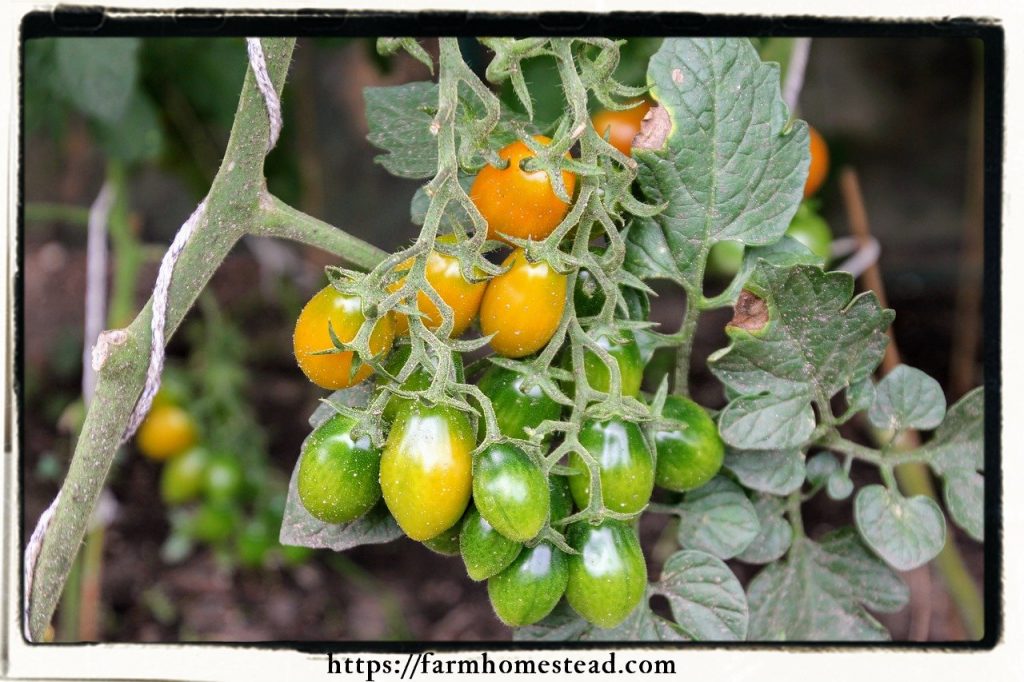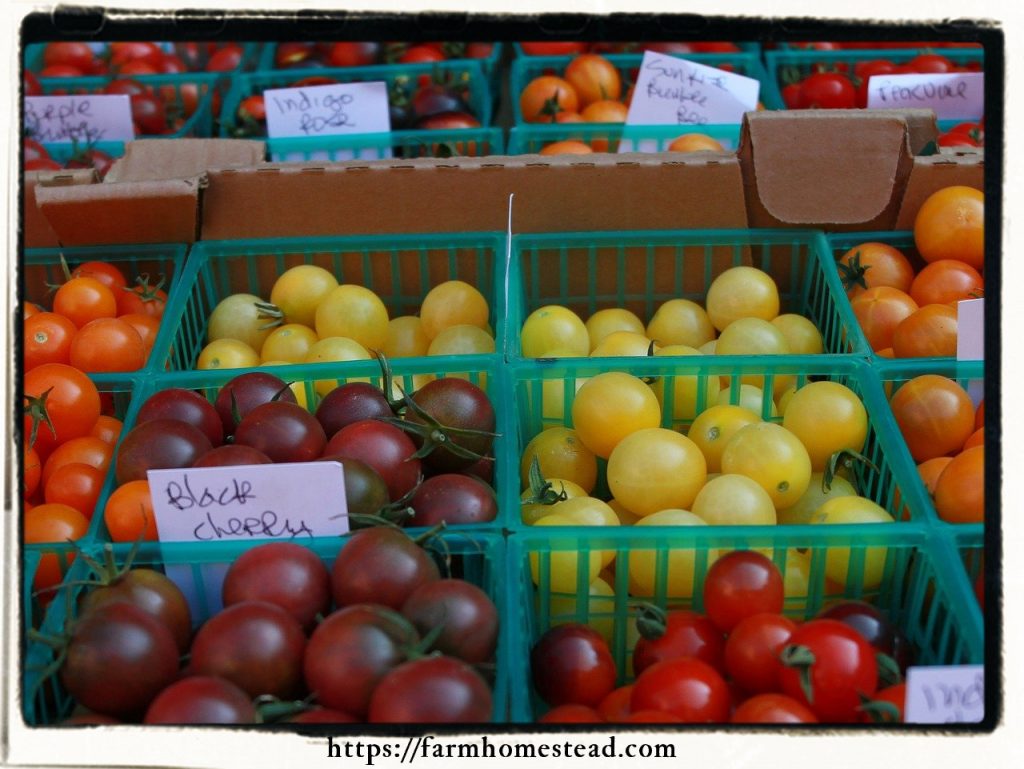Zeroing in on the Tastiest Varieties
From North to South, and coast to coast, tomatoes are consistently the most popular vegetable in American gardens. But for most gardeners, just any old tomato won’t do. How do you choose tomato plants?
Some like them red, some like them yellow, orange or even purple! Some prefer tomatoes as tiny as a dime and some want them as big as a melon. Some like them juicy, some like them dense and pulpy. Fortunately, there are almost 700 different tomato varieties in cultivation today. Plenty of choices for everyone!
If you’ve been gardening for many years, you probably already have a few favorite tomato varieties that you plant every year. In my own garden, I’ve tried at least two dozen different varieties over the years. When spring comes and it’s time to decide which tomato varieties to grow, here’s what I think about: fruit characteristics, time to maturity, growth habit and disease resistance. Those are the most important things to consider for me, when I choose a tomato plant.
Disease resistance is important, because tomatoes are vulnerable to a number of diseases that can weaken the plant and reduce yields. Look at the catalog description, seed packet or plant label to see if that variety has resistance to verticillium and fusarium wilt, two very common soil-borne diseases that affect tomatoes. Resistance to these diseases is designated by a V or F after the variety name. If tomatoes in your region suffer from root-knot nematode (N), Tobacco Mosaic virus (T) or Alternaria (A), look for resistance to these diseases as well.
Growth habit is important to consider because to get a bumper tomato crop, you need to provide enough room for the plant and adequate support. Tomatoes have one of two growth habits. Determinate (bush)
varieties grow to a certain height (usually 2-3 ft), set fruit, and then concentrate on ripening that fruit. Indeterminate (vine or cordon) varieties keep growing taller, setting and ripening fruit until they’re killed by frost.
If you have a limited amount of growing space or will be growing tomatoes in a container, you should probably select a determinate (bush) variety. Determinate varieties are also good for cold climate gardeners who need to
harvest their whole crop within a couple weeks. If you have plenty of space, can provide some sturdy support, and want to pick your tomatoes over several months, select a an indeterminate variety.
Most paste tomatoes are determinate. That works great for me, because the fruit all ripens within 2 or 3 weeks. I spend those couple weekends canning, making sauce for the freezer, and running the dehydrator. Then it’s over! Because these determinate plants only get about 2 ft high, they do fine without any support. I just use plastic or straw mulch to keep the fruit off the ground.
Most cherry and beefsteak tomatoes are indeterminate. This means the plants get huge, but it also means they will produce fruit continuously from early July right to frost.
Time to maturity is important if you have a short growing season. Where I live, I need to harvest my tomatoes by early September, before the light fades and frost comes. So I look for tomato varieties that will start ripening fruit in less than 75 days. Many of the really big beefsteak varieties require a full 90 days to mature.
Fruit characteristics are what I care about most. I use tomatoes in salads, on sandwiches, and just to eat out of hand. I dry them, can them and also use them in fresh and frozen sauces. So I select tomato varieties based on how well they’re suited to these uses. Here’s what I’ve been planting lately:
‘Sun Gold’ is a 65-day, indeterminate golden-orange cherry tomato. The plants are big and rangy, so they need to be well staked, and should be surrounded by a strong cage. Give them that, and they’ll produce an incredible abundance of 1″ diameter ultra-sweet fruit over a full 3 months. If you live where summers are hot, you probably don’t have much trouble growing sweet, flavorful tomatoes. But in areas where summer is short and nights are cool, tomatoes never get very sweet. I have been so spoiled by Sun Gold’s dependable super-sweet flavor that I now add them to my tomato sauces and slice them onto my sandwiches. I even dry them to toss into winter salads.
‘Big Beef’ is another indeterminate tomato, but it produces big, 4 to 6″ diameter fruit that are great for tomato sandwiches. At 80 days, this variety is early for a beefsteak-type, so I usually get a couple weeks worth of fruit before frost.
‘Juliet’ is a 60-day indeterminate variety with fruit that are firm, glossy and quite dense, like miniature paste tomatoes. They ripen fast and furious, and are then ready to go into soups, sauces, salsas and cold salads, get stewed whole for canning, and get halved for drying.





